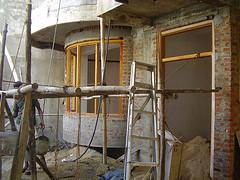 On the benefits of metering heat energy today says a lot. The object of attention is mainly housing as the most important and at the same time a problematic sector utilities. It is usually left unattended for a large reservoir of issues related to taking into account the heat in non-residential sector. However, this issue has become especially urgent today: according to the recently entered into force the Law on Energy Conservation, heat meters must be installed by legal entities before 2011. Let us try to understand the peculiarities of the organization for heat in commercial enterprises. Of standards for metering heat supply Organization (TCO) identify several categories of consumers: the basic (large industrial plants), population (all housing), budgetary institutions (hospitals, schools, government institutions) and, finally, other, under which refers to all businesses, whether manufacturing facility, the bank or shopping mall.
On the benefits of metering heat energy today says a lot. The object of attention is mainly housing as the most important and at the same time a problematic sector utilities. It is usually left unattended for a large reservoir of issues related to taking into account the heat in non-residential sector. However, this issue has become especially urgent today: according to the recently entered into force the Law on Energy Conservation, heat meters must be installed by legal entities before 2011. Let us try to understand the peculiarities of the organization for heat in commercial enterprises. Of standards for metering heat supply Organization (TCO) identify several categories of consumers: the basic (large industrial plants), population (all housing), budgetary institutions (hospitals, schools, government institutions) and, finally, other, under which refers to all businesses, whether manufacturing facility, the bank or shopping mall.
Typically, this category accounts for about 15-20% of the total heat consumption. It must be said that commercial customers were originally assigned to more difficult conditions than other categories. Ever since the 1990's came into wide usage practices when low heat tariffs for households and public offices were provided by substantial overstatement of prices on it for industrial and commercial enterprises. For example, in the autumn of 2009, the fas, in Yekaterinburg equalized value to heating systems for commercial and Budget estate. Until then, it differed by 10 times (respectively, 8.83 million rubles and 883 rubles per Gcal / h). According to Boldyreva, engineer, sales and implementation of district heating Reutovo, each organization that releases heat to consumers, according to its own tariff ceqm that apply to legal persons.